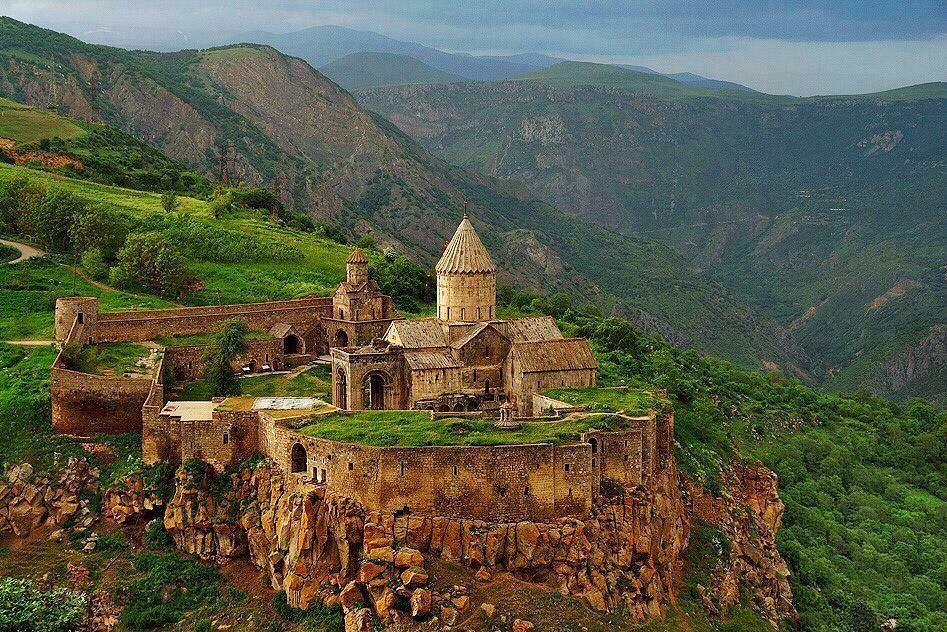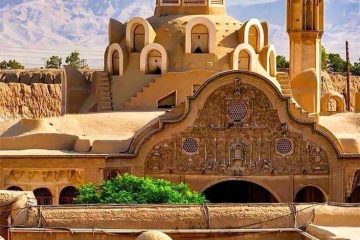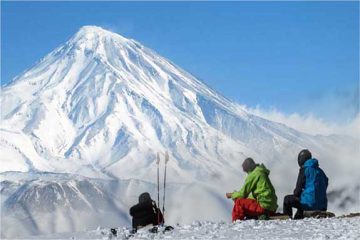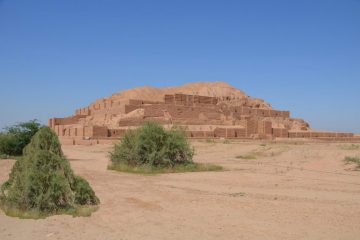Iran and Armenia
12 days/ 11 nights
| DEPARTURE/RETURN LOCATION | Zvartnots International Airport / IKA International Airport | ||||
| DEPARTURE TIME | Please arrive at least 2 hours before the flight. | ||||
| INCLUDED |
| ||||
| NOT INCLUDED |
|
1° Day; Country of origin - Yerevan
Arrival in Yerevan, the capital of Armenia, at Zvartnots International Airport. Transfer to hotel and check-in.
2° Day; Yerevan - Garni - Geghard – Yerevan
After breakfast, we visit the city of Yerevan, starting the circuit with the Victory Park, which offers the best view of the city and houses the giant monumental statue Mother Armenia (Mayr Hayastan). We continue to Matenadaran, the only museum-library in the world which is considered a rich repository of thousands of manuscripts. Afterwards, we will visit Cascade Complex, a monumental modernist limestone stairway, which houses the modern art collection of Gerard Cafesjian Museum of Art. Walk to Armenia Opera Square, then along North Avenue, Yerevan’s pedestrian street, to Republic Square in the heart of Yerevan, surrounded by the city’s most impressive buildings, where Stalinist style and Armenian architecture blend, creating an incredible spectacle for dancing fountains every evening in summer.
Departure for Kotayk Province to visit the Garni Temple, a Hellenistic Roman temple and the only one that survived after the Christianization of Armenia in the 4th century AD, considered a true jewel of pre-Christian Armenian architecture.
After a break, by 4 × 4, to the Azat River gorge, famous for its hexagonal-based prismatic basaltic formations in the shape of organ pipes that have given the nickname “Symphony of Stones” to this place, and the Geghard Monastery (UNESCO World Heritage Site), located in a deep and narrow gorge and partially carved into the rocks, which takes its name from the spear that pierced Jesus, brought by the apostle Thaddeus, preserved along with other relics for several centuries.
Return to Yerevan and visit Tsitsernakaberd, a monument dedicated to the 1.5 million Armenians that were the victims of the Armenian genocide in 1915.
Overnight stay in Yerevan.
3° Day; Yerevan - Khor Virap - Areni - Noravank – Yerevan
After breakfast, departure to the southeast where the Khor Virap Monastery is located in the Ararat plain, near the Turkish border. The chapel of this fortified monastic complex was used as a prison – Khor Virap means deep well – where St. Gregory the Illuminator was imprisoned for 13 years in the 4th century. We continue to the Vayots Dzor wine region, characterized by steep gorges and wild peaks, and Areni, where we stop to taste local wines. Later, we visit the Noravank Monastery by architect Momik, surrounded by rugged reddish Rocky Mountains, and the Surp Astvatsatsin Church, decorated with bas-reliefs.
Return to Yerevan and overnight stay at the hotel.
4° Day; Yerevan - Zvartnots - Echmiadzin - Aknalich – Gyumri
After breakfast, departure for the ruins of Zvartnots Cathedral (UNESCO World Heritage Site), known as the Cathedral of Vigilant Forces, which was erected in the 7th century and razed to the ground in the 10th century due to an earthquake. This cathedral, which predates the Urartian period, is famous for its bas-reliefs in which Christian and pre-Christian symbols are synthetized.
Arrival in Echmiadzin, a city added to the UNESCO World Heritage List, called “the Armenian Vatican” because it is the seat of the Catholicos, the head of the Armenian Apostolic Church. Then, we visit the Cathedral of Mayr Ator, built under the orders of St. Gregory the Illuminator and the first cathedral of the Christian world, and the Church of St. Hripsime, which houses the tomb of the martyred saint in a crypt.
We continue to Aknalich, where the only Yazidi temple is located. The Yazidis are an ethic Kurdish minority that practices a pre-Islamic religion derived from Zoroastrianism, mixed with Islamic and Christian beliefs.
Arrival in Gyumri, the second largest city in Armenia, where we visit Vardanants Square, where the town hall, Yot Verk Church and Holy Savior Cathedral (under reconstruction), destroyed by an earthquake in 1988 that caused the death of tens of thousands of people, are located. Today Gyumri, risen from the ashes, offers a beautiful architecture belonging to the early 20th century, characterized by tuff facades of Art-Nouveau and neoclassical style.
Overnight stay at the hotel.
5° Day; Gyumri - Haghpat - Akhtala – Dilijan
After breakfast, visit of the Haghpat Monastery, built in the 10th century and added to the UNESCO World Heritage List, which was the most important Armenian monastic complex in the medieval age (12th century). The university located here enjoyed great fame in the Armenian world and its school of copyists and miniaturists was one of the most renowned in Armenia. The famous Armenian poet, composer and storyteller Sayat-Nova spent 20 years of his life in this place.
We also visit Akhtala Monastery, built on a rocky spur surrounded by high and deep canyons, whose fame is indebted to being one of the few churches in Armenia with interior walls decorated with frescoes (1205-1216), which are considered among the best examples of Byzantine art outside the Byzantine Empire.
We continue to the province of Tavush and the urban community of Dilijan, called the “Switzerland of Armenia” because of its dense forests.
Overnight stay in Dilijan.
6° Day; Dilijan - Sevan - Noratus - Selim - Sisian
After breakfast, departure for Sevan Lake, one of the largest freshwater alpine lakes in the world, occupying one-thirtieth of the total area of Armenia. Also, we visit Sevan Peninsula, where the Sevanavank Monastery is located, overlooking the lake and surrounding mountains.
Then, we drive to the village of Noratus, known for its monumental cemetery with finely inlaid khachkar (cross-stone), dating back to the 9th-17th centuries. We will also taste the tasty Armenian cheeses in a dairy, some of them matured in wine and cognac.
Arrival at Selim Pass to visit the ancient Orbelian Caravanserai, a basalt building with a three-nave hall to accommodate travelers on the ancient Silk Road. This site attests to Armenia’s importance as a transit point along the Silk Road. Karahunj is a megalithic site preserved from the Bronze Age located on a plateau surrounded by high mountains formed by 204 megaliths in a circle, many of which have enigmatic circular holes whose function is unclear so far.
Arrival in Sisian and overnight stay at the hotel.
7° Day; Sisian - Tatev - Meghri - Iranian Border - Jolfa
After breakfast, departure for Halidzor from where you will board “Wings of Tatev”, the longest cable car in the world (5.7 km, 11 minutes), to reach a true masterpiece of medieval Armenian architecture; Tatev Monastery, a 9th century monastic fortress, once famous for its university and spiritual center in southern Armenia.
We continue to the urban community of Kapan to the Iranian border at Meghri. Having passed through customs, we meet the Iranian local guide and continue the journey to Jolfa.
Dinner and overnight stay in Jolfa.
8° Day; Jolfa - Tabriz
The day is dedicated to visiting the churches of the first martyrs of Christianity, starting with Saint Stepanos Monastery, an Armenian cathedral dating back to the 9th century AD. The church is located in a mountainous area where the Aras River meanders in the valley of the Iranian border very close to the Nakhchivan Autonomous Republic. In fact, the monastery is located in the middle of the lush nature of the border area and is a synthesis of Iranian and Byzantine architecture which later became known for the peculiar style of typical Armenian architecture. Its octagonal bell tower has a salmon-pink color (orange-pink) due to the rocks of the surrounding mountains. As the monastery has a wooden and metal gate, a fortified enclosure, and a series of towers by which the night watch was carried out, it resembles a fortress from afar. Next to the prayer hall there is a cloister where there are many rooms to accommodate the seminarians who spent part of their lives following the courses of the monastery’s religious school. This area has been a transit route for merchants, armies and devotees.
Afterwards, we visit St. Thaddeus Monastery (Kara Kelisa), also called Black Church, the name is due to the color of the stones used in the construction of the church. In Azeri language, “kara” means black. St. Thaddeus Church is one of the oldest and most remarkable monuments belonging to Christianity that has remained till today. Its great importance for the Armenian Orthodox community of the country comes from the claim that the church is considered to be the first in the world which was built in 68 AD by one of Jesus’ apostles, St. Thaddeus, who came to Iran with the aim of preaching the teachings of Christ. The church consists of two parts: a black structure, the original church building from which it takes its name, and a white structure, the main church that was added to the west wing of the building in 1810.
Arrival in Tabriz, dinner and overnight stay at the hotel.
9° Day; Tabriz - Kandovan - Tabriz
The region of Iranian Azerbaijan occupies a small territory compared to the total area of Iran. Azerbaijan region was a kind of international agora, which observed all the geopolitical movements of the Safavid and Ottoman empires, as well as the arrival of Christian evangelists for the propagation of Christianity. Tabriz has a fundamental role in the modern history of Iran as the initial phase of one of the Iranian Constitutional Revolution took place in this city.
Today Tabriz, the capital of East Azerbaijan Province, is not only among the metropolises of Iran, but also considered as an important industrial center of tiles, tractors, textiles and carpets. It is also famous for the production of dried fruits. The foundation of this historic city dates back to 1500 BC whose few historic buildings remain standing due to tremendous earthquakes. In 2012, Tabriz was selected as the most beautiful city in Iran and was named the tourism capital of Islamic countries in 2018. Tabriz was the capital of Iran during several dynasties such as Ilkhanid, Qara Qoyunlu and Safavid. In addition, it was the residence of the royal family and the crown prince during the Qajar dynasty. This city credited with the title of “the city of the firsts” contains the historical complex of Tabriz Bazaar, the largest covered bazaar in the world. From a cultural point of view, what highlights the importance of Tabriz is the cultural and religious exchange with the neighboring countries such as Turkey, Armenia and Azerbaijan. Visiting Tabriz and its rich history will give us an opportunity to reflect on socio-historical events such as the Tobacco Protest, the Constitutional Revolution and the economic crisis during the Qajar dynasty, and to visit the churches of the first martyrs in Christianity.
After breakfast, visiting the capital of East Azerbaijan:
- Tabriz Archaeological Museum: where a repertoire of historical objects, mainly discovered in excavations in Azerbaijan, is displayed in three main halls. This collection tells us about the passage of Persian art from Iran to the West. One of the most interesting areas will obviously be that of ceramics and terracotta dating from the 12th and 13th centuries AD, when Persian calligraphy had an artistic influence on decoration of objects. In addition to the National Museum of Iran in Tehran, the Museum of Azerbaijan has the largest collection belonging to different periods of Persian history.
- Blue Mosque: built in 1465, by order of the ruler Jahanshah, an art lover and also a poet of the Turkmen dynasty Qara Qoyunlu. It was not only a mosque but a large complex containing a library, a dervish convent, a garden, baths and a mausoleum. Following an earthquake in the 18th century, today only a part of the mosque has remained standing thanks to the collaboration and restoration of archaeologists. The particular style of this mosque, very different from others, is known as the Azebaijani style which is even unusual in the Persian world, especially because it confirms an Ottoman influence in Tabriz. Among the photographers, attracted by this mosque, we could mention Luigi Montabone -Italian photographer- who photographed the mosque in 1862. Here is a description of Ella Maillart- Swiss traveler, writer and photographer- of this fascinating mosque: “This particular feeling when you are in love and you think you have never understood, until then, the splendor of the sky at midnight when stars, not equal no each other, shine with such brightness that they seem to come toward you. This extraordinary mosaic makes you dream of a corner where each star is a colorful flower.”
- Tabriz Bazaar: an exceptional complex that includes about 35 km of covered walkways, with more than 7000 shops, 24 caravanserais and 28 mosques. The main activity inside the bazaar was the manufacture of carpets, but it is also famous for its jewelry and goldsmiths, the sale of dried fruits, spices and the famous cheese of the region called Lighvan. The bazaar of Tabriz in Iran is a traditional bazaar and was the center of economic life where most of the activities of the inhabitants took place. Architecturally, the bazaar contained several buildings whose shape was adapted to the low winter temperature of Tabriz. The Tabriz bazaar is a shining example because it includes almost every conceivable example of a complex suitable for economic activities: stores, workshops, warehouses, trading houses, caravanserais, passages and intersections. In addition, the second section of the bazaar was devoted to places related to other socio-religious activities: mosques, Koranic schools, spaces dedicated to religious ceremonies, traditional Iranian gymnasium (Varzesh-e Pahlevani), tea houses and taverns. In short, this commercial labyrinth can make us lose hours and hours in its beauty where we will have a unique sensory experience. Just walking and taking a deep breath, you will be intoxicated by the aroma of freshly ground cinnamon, the wool of Saray-e Mozaffari carpets, fresh cheese and Barbari bread, the typical bread of the Azeris of Iran, freshly baked.
- The afternoon is dedicated to the excursion to Kandovan Village, located in a wonderful valley of Mount Sahand with a picturesque panorama, famous for houses carved out of volcanic rock. Due to the conical shape and the type of excavations, the houses can be easily cooled or heated depending on the season.
- Return to Tabriz. We will take a walk around the garden of Shah Goli, also called El Goli, the largest water reservoir to irrigate the gardens of Tabriz up to the Tehran Gate
Dinner and overnight stay at the hotel.
10° Day; Tabriz - Soltaniyeh - Qazvin - Tehran
We leave for Tehran leaving Tabriz behind. On the way, we stop in the city of Soltaniyeh, and then we continue to Qazvin, the ancient capital of the Safavids where we are going to visit a magnificent bazaar on the Silk Road. Finally, we arrive in the Iranian megalopolis, Tehran.
- The Dome of Santa Maria del Fiore: also known under the name of the dome of Florence Cathedral (Duomo), was built in 13th century as the roof of the transept of Florence Cathedral. It is considered the closest structure to the Dome of Soltaniyeh. The construction of the cathedral began in 1296 by the Florentine architect Arnolfo di Cambio, although the realization of the dome remained a problem for over a hundred years. The project was finally entrusted to Filippo Brunelleschi, who erected a double-shell dome with a height of 39 m. The dome, which took 16 years to be built, is one of the most important and impressive architectural achievements of the 15th century. As Piero Sanpaolesi has shown, the dome of Santa Maria del Fiore, by applying the double-shell structure, may have been inspired by the one in Soltaniyeh, located about 300 km southeast of Tabriz. For about thirty years, it was the summer residence of the Ilkhanid Mongolian tribes.
The dome of Soltaniyeh, the largest brick dome in the world, about 48.5 meters high, rests on a high octagonal construction, each side of which is nearly 80 meters long. The dome, covered by turquoise tiles, is surrounded by eight minarets. The interior, a perfect octagon, on each side has a large, tall iwan that at the bottom is divided into two superimposed planes: the lower with a downward door or niche and the upper with a loggia to look into. Each floor opens to a different panorama. In order to discover the symbols, floral motifs, geometry, calligraphy and symmetry of Iranian architecture, one must contemplate every corner of this building which, with its chromatic beauty, will leave any visitor speechless.
Qazvin in one the five most important cities in terms of historical attractions. The foundation of Qazvin dates back to the period of Shapur I, 4th century AD. The highlights of this city are economic, cultural and social places such as mosque and caravanserai. This city besides being a crucial node on the Silk Road, also was the capital of Iran for 57 years in the Safavid era. On our visit, we will walk through the elegant Saray-e Sa’d al-Saltaneh, one of the most spectacular places in the traditional bazaar of Qazvin. This brick caravanserai contains several entrance gates, some of which are connected to the surrounding streets and others are connected to different parts of the bazaar. The entrance gates open into a vestibule of beautiful architectural style. There is a Chahar-Sough on the south side with a dome on top. Around this cross-shaped passageway, there are 16 chambers with a height of 1 meter and carved wooden doors.
Arrival in Tehran. Dinner and overnight stay at the hotel.
11° Day; Tehran
The whole day is dedicated to visit Tehran, the most dynamic and effervescent city of Iran. With a population of over 8 million, this bustling city reflects its complexity in a chaotic atmosphere like any other metropolis. However, Tehran is a cornerstone of modern history as it offers its extraordinary museums to travelers among which are National Jewelry Museum that has the most important collection of precious jewels in the world.
Iran’s concern of artistic developments, recent architectural interventions and the revival of many traditional style cafes has made the city a fascinating labyrinth that holds a surprise for visitors at every corner.
Visiting Tehran:
- National Museum of Iran exhibits history, art and culture through archaeological findings from the sixth millennium BC to the Islamic era, the 7th century AD. There is a wonderful collection of ceramics, pottery and bronze in this museum and, in addition, every six months, a temporary exhibition is organized with the most valuable archaeological objects, borrowed from other museums such as Venice, Berlin, etc.
- Golestan Palace, located near the Grand Bazaar, is a remarkable complex that has its roots in the 16th century, when Tehran slowly transformed from a simple village into a real city. Golestan means “garden of flowers”, a name that honors wonderful Persian Gardens in the place. The contemporary Iranian history is so indebted to this complex where Mohammad Reza Pahlavi was crowned claiming himself the successor to Cyrus the Great. Next, we visit the entrance to Tehran Grand Bazaar where, among its 10 kilometers of galleries, is possible to find any imaginable object.
- National Jewelry Museum (open only from Saturday to Tuesday) is located in a large vault with a 25 cm thick door in the basement of the Central Bank of Iran. The museum houses royal jewels, precious stones, a globe set with gems, a variety of tiaras, the crowns of the Pahlavi and Qajar dynasties, and the world’s largest pink diamond, Darya-e Nour (182 carats). This diamond was brought to Iran as a symbol of Nader Shah’s victorious campaigns in India in 1739.
The Carpet Museum is an alternative to the National Jewelry Museum.
Dinner and overnight stay at the hotel.
12° Day; Tehran - Destination Country
As the sun sets and its rays brighten, the route back to Tehran becomes more noticeable, as if the journey to Iran has just started. It is time to pack the suitcase, which returns loaded with excitement, enthusiasm and a lot of culture. Normally, travelers worry about the cost of overloading their luggage, and as the color of the sky darkens, they are thinking about how to arrange souvenirs and gifts; they like to buy everything from pistachios to fabrics and turquoise stones. There is no doubt that everything will fit, except one thing: the hospitality of the people we met in the markets, historical sites and restaurants. This image is engraved in their hearts and is an unforgettable memory that the traveler will carry with him everywhere. Above all, it will be a good incentive for all those who have enjoyed this trip to return to Iran for the second time.
You should be at IKA, 50 kilometers from the center, at least 3 hours before the scheduled flight.
Transfer to Imam Khomeini International Airport (IKA) departing Tehran to destination country.






Tour Reviews
There are no reviews yet.
Leave a Review